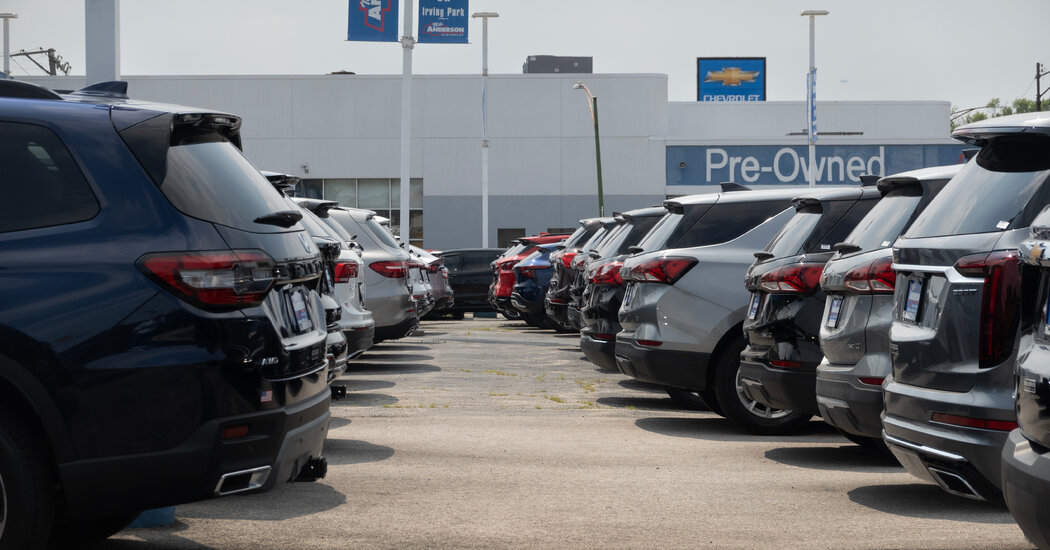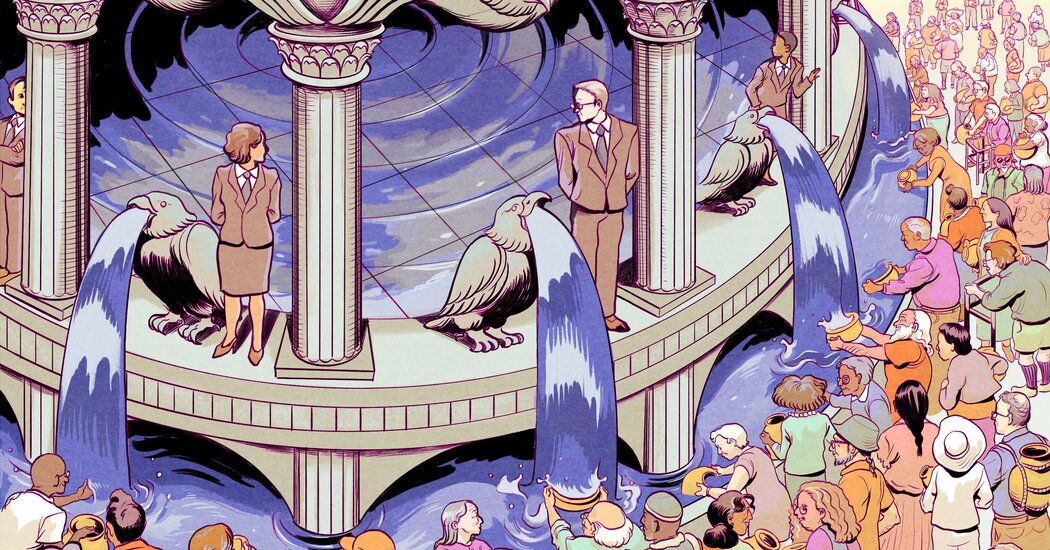Most automakers on Tuesday, with the exception of Tesla, reported modest sales growth in the three months between April and June as high interest rates, persistently high vehicles prices, and uncertainty about the economy and the coming presidential election weighed on consumers.
Sales in late June were also slowed by disruptions at car dealers stemming from a cyberattack on a company that supplies software and data services to dealerships.
Cox Automotive, a market research firm, estimated that 4.1 million new cars and trucks were sold in the second quarter, up a little more from the same period in 2023. In the first six months of 2024, 7.9 million new vehicles were sold, an increase of 3 percent from the first half of last year, Cox said.
Slow growth is likely to continue through the rest of the year, with consumers delaying big-ticket purchases until after the election, said Jonathan Smoke, Cox’s chief economist. “The market is roiled by uncertainty,” he said. “We probably can’t quite keep the pace of sales of the first half, but we aren’t expecting a collapse in sales, either.”
Cox has forecast 15.9 million new cars and trucks will be sold this year. That would be an increase from the 15.5 million that were sold last year, but still well below the 17 million vehicles sold annually before the pandemic.
General Motors said on Tuesday that it sold nearly 700,000 cars and light trucks in the United States in the second quarter, an increase of less than 1 percent from the same period last year. The company said it was its highest quarterly total since the fourth quarter of 2020.
The quarterly total included sales of nearly 22,000 electric vehicles, up 40 percent from a year earlier. Almost all were models that use G.M.’s more advanced Ultium battery pack technology. Its top-selling electric models were the Cadillac Lyric, a luxury sport-utility vehicle, and the Chevrolet Blazer, also an S.U.V.
G.M. said its sales in the first six months of 2024 totaled 1.3 million vehicles, down slightly from the same period in 2023.
But Tesla on Tuesday said its global sales fell 4.8 percent, to around 444,000, in the second quarter from the same period a year ago. The company’s sales have now fallen for two consecutive quarters; they declined 8.5 percent in the first three months of the year from a year earlier.
Tesla’s second quarter sales were higher than analyst expectations, and they were supported by price cuts in some markets and the company’s offer of loans carrying an interest rate as low as 1 percent on the Model Y sport utility vehicle. Tesla probably sacrificed profit to prop up sales, analysts say.
Tesla once had the market for electric cars almost all to itself, but it has recently faced intense competition from Chinese carmakers like BYD, Nio and SAIC, which sells cars in Europe using the British brand MG. The Chinese brands undercut Tesla on price in their home market while offering features like dashboard screens that can be rotated by voice command.
In Europe, Tesla was in fifth place in April in electric car sales, according to Schmidt Automotive Research. Tesla ranked behind Volkswagen; Geely Auto, which owns Volvo and Polestar; Stellantis, which owns Peugeot and Fiat; and BMW.
Tesla’s market share in the United States is expected to fall below 50 percent this year as G.M., Honda and other established carmakers offer models that are newer designs than the Tesla Model Y and Model 3, which account for 95 percent of Tesla sales.
An official total for industry sales won’t be available until Wednesday, when Ford Motor is expected to report its latest sales figures.
The auto industry is still trying to regain a sense of normalcy after the pandemic disrupted auto production and left manufactures struggling with shortages of key parts for most of the past three years.
Dealers now have healthy inventories of new vehicles — about 2.8 million — Cox said. But increases in the prices of new vehicles have made it harder for many consumers to buy them. Cox said the average price of new vehicles sold in May was $48,389, near the record high of about $50,000 set at the end of 2022.
High interest rates have also dampened demand for new vehicles. The average interest rate paid on new-vehicle loans in June was 10 percent, the highest level in 24 years, Cox said.
For a time, electric vehicles had been an area of growth for automakers but sales of those models have slowed sharply in the past 12 months. Cox said just under 300,000 battery-powered cars and trucks were sold in the second quarter, about the same number that were sold in the year-ago period.
Consumers interest in such cars has cooled because they tend to sell for higher prices than gasoline models, and because many potential buyers worry about how far they can travel on a fully-charged battery and difficulties in refueling them.
At the same time, interest in hybrid vehicles, which have a combustion engine and batteries and electric motors, has surged. That has helped automakers like Toyota, Honda, Hyundai-Kia and Ford that offer hybrid models.



